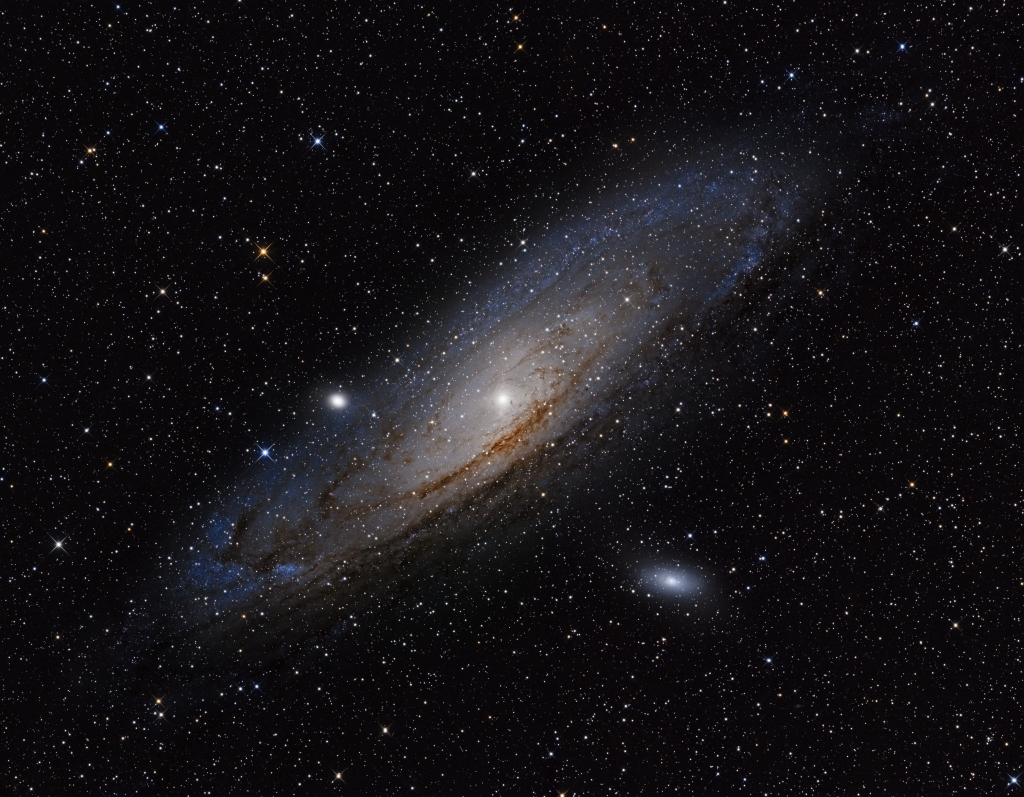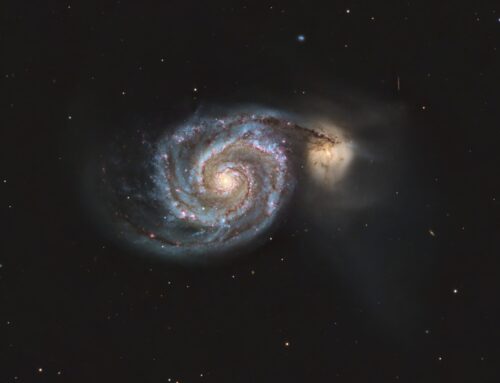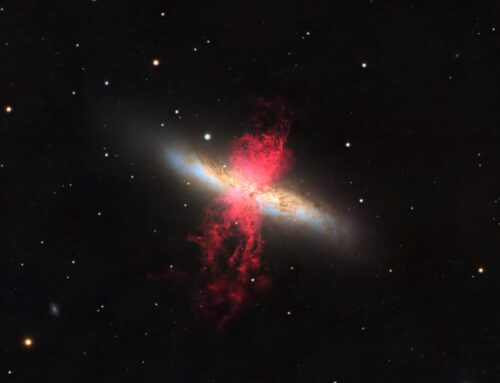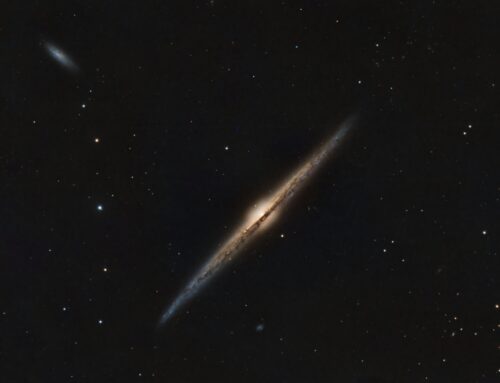M31, The Andromeda Galaxy
Click image for full size version
October 14, 2012
The Andromeda Galaxy is a true show piece. It’s visible to the naked eye from my house at this time of year, and is a delight in binoculars, small and large telescopes and in images. I first imaged Andromeda with a 1-shot colour camera in 2009 during the Huronia Star Party, but this new shot shows much more depth, detail and colour. It’s a mosaic of two frames — this galaxy is so big I could not fit the whole thing on my imaging sensor.
The Andromeda Galaxy is thought to be quite similar to our own Milky Way galaxy. The two are the largest galaxies of the cluster we are in, known as The Local Group. It lies about 2.5 million light years from us — pretty close. In fact, Andromeda and the Milky Way will eventually merge. This shot shows star clusters, nebula and dust lanes in the Andromeda galaxy. The galaxy’s tips extend almost right into the corners of this image, which spans 3.5 degrees across the diagonal (about 7 moon widths). The galaxy to the lower right of M31 is M110. This shot shows some dark features in M110. The galaxy on the left edge of Andromeda is M32, another satellite galaxy. Andromeda is thought to contain about a trillion stars. Wow.
Whenever I look at this galaxy — which is often with my naked eye — I think of the light reaching my eye having begun its journey before humans evolved on earth. Pretty cool.
Tekkies:
SBIG STL-11000M camera, Baader LRGB filters, 10″ f/3.6 ASA astrograph, MI-250 mount. Guided with STL-11000’s internal guider. Acquistion, guiding, calibration, registration and integration all done using Maxim-DL. All other processing in PixInsight. Shot from my SkyShed in Guelph, Ontario. No moon. Average transparency and average seeing.
Two overlapping panes, 18x5m R, G and B on each, for a total of 4.5 hours on each pane, or 9 hours in all.
I created 6 registered greyscale images in MaximDL from all the data: Pane 1 and Pane 2 R, G and B. Each of the six frames was processed with Dynamic Background Extraction in PixInsight, using the same generation map for all Pane 1 colours and another sample generation map for all Pane 2 colours. Then red, green and blue mosaics were made from the Pane 1 and Pane 2 data. The three greyscale images were then combined in PixInsight using RGB. This RGB image was cropped slightly to remove alignment artifacts and then processed using a fairly typical workflow in PixInsight: colour calibration, deconvolution, histogram stretch, ACDNR (small scale), histogram stretch, curve, Local Histogram Equalization, saturation, hue adjustment, unsharp mask. Image scale is about 2.2 arcsec per pixel for this camera / telescope combination.







Spectacular images,Ron.
Congratulations!!!!
Jose
Absolutely stunning! That close up of the core is amazing for the detail you captured. I am a newbie to MaximDSLR, and am using it at the moment to process my own 2 panel mosaic of M31. Yours is very inspiring. Thanks for posting it!
Dean